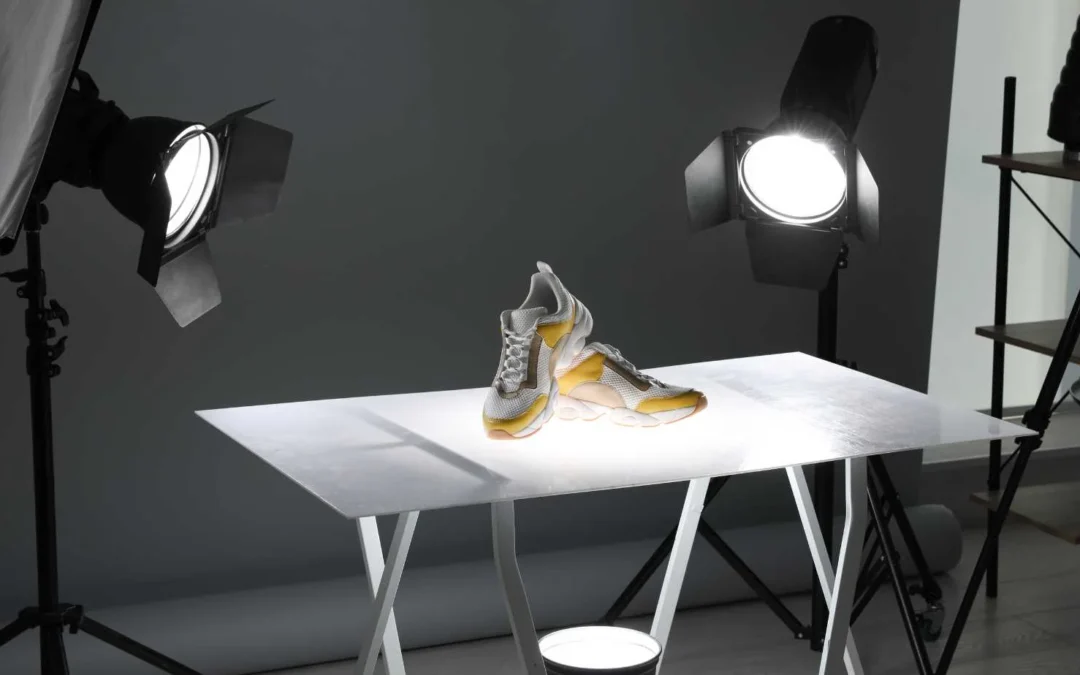Think back to the last product you bought online.
How much influence did its photo have on your decision?
Chances are it was the first thing that caught your eye and the last thing you received before checking out.
We are visual creatures who rely heavily on our sense of sight to decode the world around us and function. So, for any ecommerce brand, visual cues represent a huge opportunity.
An immersive product photo with excellent visual features, such as lighting and composition, is enough to capture attention and stand out from competitors.
We’ve gathered 4 examples of excellent product photography in ecommerce. As we delve into each, you’ll learn:
- How a product’s lighting influences emotions.
- How close-up photos help with product evaluation.
- The importance of adding a human element to product photos.
- How to leverage your data for better conversions.
But first, what makes for excellent photography in ecommerce?
Essentials of Excellent Product Photography in Ecommerce
High-Quality Images With Emotive Light Properties
A high-resolution product image with noticeable light properties is immensely attractive for websites.
Such an image draws one in and triggers an emotional response that’s perfect for consumers at the start of their buying journey—the need-awareness stage.
Soft light product photos, with their broad shadow-to-highlight transitions and minimal shadows, create a warm and inviting feeling. This effect works for promoting fun products, like food items or holiday destinations.

Hard light product photos, with their crisp shadow-to-highlight transitions and intense shadows, create a more dramatic and edgy feeling. This effect works for promoting creative products, like fashion items and films (through movie posters).

Perceptive and Visually Attractive Compositions
A visually appealing composition is vital for product photography because it adds dimension to a website’s images. This helps consumers at the consideration stage of the buying process.
Online consumers cannot touch and view products at various lengths or angles. So, a carefully laid out photo composition of a product helps shoppers perceive measurements and notice physical qualities.
A perceptive composition answers questions like:
- “How will this product look in my hands?”
- “How big is it? Will it fit my space?”
- “How will this item look in this environment?”

In the photo above, you can easily perceive the toy’s physical size relative to the dog featured in the composition.
The rule of thirds is the standard approach to creating compositions where a photo frame is divided into thirds, horizontally and vertically, to create nine equal boxes of a grid.
Following the division, the subject features at these intersections, which are the focus of one’s gaze, hence the most visually attractive.
Feature-Defining Close-Ups
A close-up shot showcasing a product’s key features is another essential aspect of product photography that helps consumers at the evaluation stage of the buying process.
At this point, a shopper is past needs recognition and is looking for the best value among the available options. The customer will compare and rank products against each other with their features setting them apart.
Typical close-up product shots feature white backgrounds to help focus a viewer’s attention on the product on display.

Storytelling and context are vital aspects of ecommerce product photography that help customers visualize an item and form an emotional bond, encouraging action.
There are various approaches to storytelling and context including:
- Adding a human element: Think of those sun-kissed landscape photos and the impact of adding a smiling face to the scenery. You instantly pick up on the benefits of visiting the place from the relaxed faces in the photo.
- Capturing the process: Giving consumers a behind-the-scenes look at how a product is made creates a sense of appreciation that encourages them to purchase. Think of those appetizing food photos that feature prepping ingredients.
- Adding a case study or lifestyle shot: Photos of a product in action also help consumers visualize the pleasant day-to-day realities of using an item, encouraging purchase. Think of road trip photos that market vehicles.
So, what are some examples of excellent product photography in ecommerce?
1 – Storytelling Photo on Popov Leather

Popov Leather does an excellent job at telling the story of their craft process with a single photograph.
At a glance, you instantly get that each piece of leather that goes into their craft process passes through a precise assessment procedure that includes evaluating thickness.
The photo creates a sense of appreciation for the meticulous crafting process and helps sell the Popov brand to a customer at the start of the buying journey—the needs recognition stage.
The story sparks curiosity, compelling a customer to explore and discover more Popov products.

This is another storytelling photo from Popov Leather, but with a human element. Besides telling the story of “how it’s made,” the photo puts a face behind the Popov brand and evokes a sense of emotion that helps sell their products.
At a glance, you pick up on the personalities behind Popov’s work and feel the need to support them with a purchase. It’s a fantastic way of winning over customers and another example of excellent product photography in ecommerce.
2 – Emotive High-Quality Images on Duckworth

Duckworth’s use of emotive high-quality images is an example of excellent photography in ecommerce.
The soft light properties in the image above create a warm feeling that invites a shopper to inspect the product and notice features like color and texture.
The photo also has a blurred background and centered subjects to focus your attention. It’s exactly what a shopper at the start of the buying journey needs to trigger action.
Additionally, Duckworth uses context in its product photos to help shoppers visualize using their wool products.

This particular photo showcases an outdoor and travel lifestyle with Duckworth’s wool products. It will strike a chord with shoppers who enjoy similar activities, encouraging purchase completion.
3 – Perceptive and Attractive Composition on West Paw

West Paw stocks dog toys of variable sizes and rightly uses perceptive photo compositions to give shoppers a sense of dimension.
At a glance, you instantly pick up on a toy’s measurement relative to the dog’s size featured in the photo. This information is especially handy for buyers at the consideration stage, who need objective metrics to evaluate product options.
Also, notice how the photo’s subjects (the dog and its toy) are centered against a blurred background. This composition focuses attention on the subjects in a well-balanced manner that’s attractive and more engaging.
4 – Feature-Defining Close-Ups on Oboz

Oboz expertly uses close-up photos to highlight the features of their shoe designs.
In the image above, an aerial close-up photo draws attention to key product details, such as the thick outsoles, rubber treads, and stitched leather.
Also, notice how the shoes are displayed against an all-white snow background. The monochromatic snow backdrop helps center attention on the footwear while silently signaling their ability to take on snowy terrain.
This information is particularly useful for a shopper at the evaluation stage of the buying journey, aware of their needs and looking for the best value from the available options.

Oboz also uses context photos to help a shopper visualize life with a pair of its all-terrain footwear.
This specific image features an outdoor context and demonstrates ruggedness. It will resonate with individuals who live this lifestyle and encourage purchase completion.
As you’ve probably concluded, the examples above target shoppers at different stages of the buying journey. The table below compares these targets.
High-quality images and context photos appeal to the emotional side of a shopper’s decision-making process. As such, both target buyers at the start of the purchase process, the awareness stage, where they recognize the need for a product.
Composition photos and close-up shots appeal to the objective side of a shopper’s decision-making process. As a result, both are ideal for shoppers at the consideration stage, where they’re fully aware of their needs and are exploring options.
Facilitating a buyer’s journey through these first two stages via excellent product photos speeds up movement to the final decision stage that yields conversions. As such, investing in high-quality product photography is a must-have for any ecommerce brand.
Read the next article: 8 Product Description Examples to Copy for Your Store

